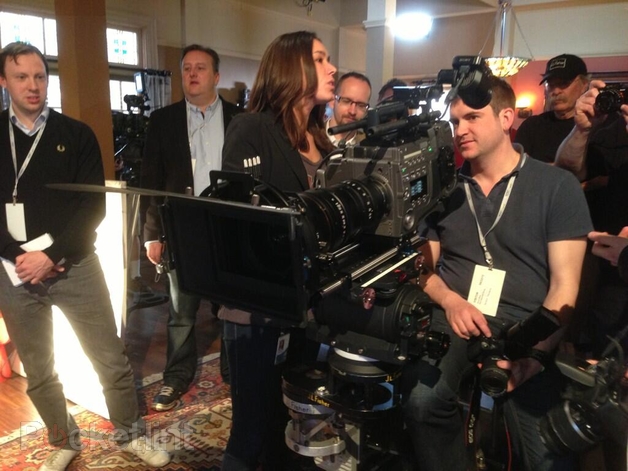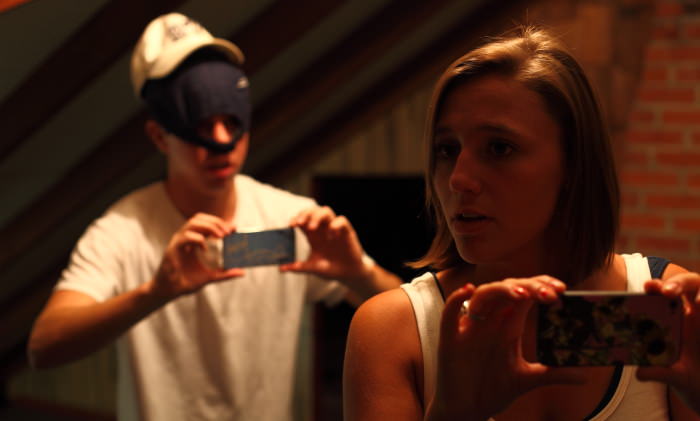With 2015 in full swing, students at our cinematography school are already seeing new trends, equipment and shooting techniques emerging this year.
One of the biggest announcements for 2015 is Panasonic’s unveiling of their latest line of 4K cameras. This might not sound like big news given that 4K cameras have been on the scene for a while now, but there’s a distinction with this latest wave: unlike any decent 4K that has come before, these guys are priced for home users.
How cheap are we talking? Very.
4K Cameras Under $1000?
Whereas a quality 4K camera like the Sony PXW-Z100 or Panasonic’s own HC-X100E would have set you back a good $6000 to $10,000 (depending on optional extras), the HC-WX970 and VX870 start as low as $900.

At such a low price, you’d be forgiven for thinking that they must have cut more than a few corners to get the price down so low. The good news is that this isn’t the case; both cameras are able to record in 60fps in 2160p with glorious results, and at frame rates of up to 240fps in 1080p (although that’s only with interpolation, otherwise it’s a commendable 120fps).
Want to see how good they look? Check out this test footage of the Panasonic HC-WX970 (and make sure you set the YouTube quality setting to max for full effect). We’re not sure what camera is used for the ‘competitor’ footage, but the results from the Panasonic speak for themselves:
And here’s a hands-on tour of the features and specs of the HC-WX970:
Given that the WX970 is priced at $999, we’re sure you’ll agree that it packs a serious punch for the money. The HC-VX870 is similarly powerful and nearly equal on specs, but $100 less expensive (the main difference being it doesn’t have the second PIP lens on the side.)
Given that both camcorders are designed for the home consumer market, there are naturally some limitations and professional users will find some of the features are a little gimmicky, but on the whole Panasonic’s new line is the first step into the affordable 4k camera arena.
Other Camera Trends of 2015
It’d be fair to say that with Panasonic having released a couple of 4k cameras under $1000, Sony are pretty much guaranteed to follow suit and we can probably expect news of their forays into this new consumer market in the coming months.

But what of the professional-grade camera trends of 2015? It seems clear that we’re moving in very definite directions this year:
SD Cards Lead The Way: It seems we’re coming to the end of the era in which cinematographers have to cart around multiple external hardrives and a laptop as well as the camera equipment itself. Given that bigger SD cards are becoming available and for way less money, an increasing number of camera manufacturers are making sure that they add slots for SD cards… thankfully.
WiFi and NFC Support: Despite just about every device on the planet having some form of internet connection (or even just interconnectivity), professional-grade cameras have been surprisingly slow to catch up. But along with a greater focus on SD cards, one camera trend we’re very likely to see for 2015 is better support for WiFi and NFC, which will make transferring footage while you’re out in the field much less of a headache.
Easier Stills: In previous times, many cameras haven’t made it easy to extract a video frame as a decent quality still on the fly. The cameras discussed above make it a one-click job and export stills at an impressive 8MP, and we wouldn’t be surprised if the rest of 2015’s new cameras come with the same feature.
And finally, it would be remiss of us not to point out one of the most obvious camera trends of 2015 – smart phones continue to play a part in even professional cinematography. It’s a trend that has been around for a few years now, but as Moore’s Law dictates, the rate of technological increase with phone cameras is growing exponentially (to the point where it’s possible to shoot a full feature film on an iPhone.) Slow-mo video in particular is the order of the day, with the iPhone 6 shooting in 240fps to create true slow motion footage rather than simulated.

*Disclosure: Neither NYFA, the cinematography school or the writer of this post has any commercial ties with any of the companies listed above.
